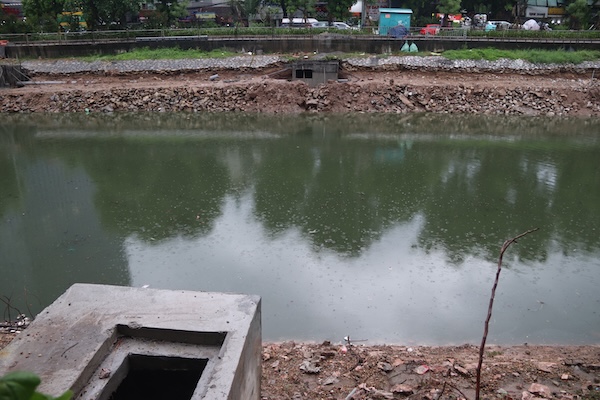The obsession gradually eases
For many generations of Hanoians, mentioning the To Lich River means thinking about the black water and the characteristic foul smell, especially on hot summer days. This is a decades-long obsession for households living along both banks.
However, recently, positive signals have begun to appear. Wastewater collection, dredging and water supply projects are showing some initial results. The stench has decreased significantly in many sections of the river, and the water color is somewhat brighter than before. However, many people believe that this is just an improvement in sensory aspects, and the journey to truly revive the river is still very long.
Ms. Thanh, a resident living on Lang Street, shared: "My family has been here for nearly 50 years, the most miserable time is in the summer, the smell of the river rises unbearablely. In recent years, the city has also been determined to make the situation much better. When I go to exercise in the morning, I don't see the strong smell like before."
Sharing the same sentiment, Mr. Xuan, a resident on Nguyen Khang Street, viewed it more realistically: "Handling the smell and color of the water is only the first and necessary step. But what the people want more is a comprehensive change. To truly make this place a livable public space, a green lung for the city, we need to renovate the landscape on both sides with trees, walking paths, and stone benches."

Synchronous solutions
Mr. Le Van Du - Head of the Water Supply and Drainage Infrastructure Management Department, Hanoi Department of Construction, provided detailed information on the solutions being implemented. According to Mr. Du, to solve the immediate problem, the city will immediately use the water after treatment of Yen Xa wastewater treatment plant.
"By building a dam in the Quang Pagoda area, the water will be replenished and kept at a water level of 3.5m, ensuring a water level depth of about 1.5m on the river. This will maintain stable water levels and improve the landscape immediately," Mr. Du explained.
To create a continuous flow for the river, in addition to the water source from Yen Xa, the city will regulate additional water sources after treatment of the West Lake wastewater treatment plant (capacity of 15,000 m3/day and night). "This process is carried out in phases to both create flow, change water and improve the quality of the river's water environment," Mr. Du added.
Regarding the long-term vision, Mr. Le Van Du emphasized that the renovation of To Lich River is a particularly important project, not only to handle pollution but also to be implemented synchronously with solutions to renovate and beautify the landscape.
"Our goal is to promote the cultural and historical values of the To Lich River, turning the surrounding landscape into a place for cultural exchange, economic development, becoming a destination for people in the capital and international tourists when coming to Hanoi," Mr. Du affirmed.











